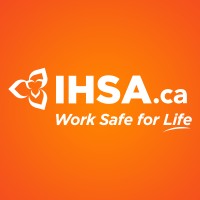Manual material handling incidents account for more than 35 per cent of all lost-time claims. Lifting, pulling, and pushing activities are commonly cited as the cause. This workshop is designed to help reduce the risk of developing low-back, knee, arm, and shoulder injuries associated with manual ma

Manual material handling incidents account for more than 35 per cent of all lost-time claims. Lifting, pulling, and pushing activities are commonly cited as the cause. This workshop is designed to help reduce the risk of developing low-back, knee, arm, and shoulder injuries associated with manual material handling.
The workshop eases the workers from awareness into action. Using the tools provided in the training, participants will identify activities in which manual material handling hazards are present in the job, conduct a brief assessment to calculate the level of risk involved, and start to develop potential solutions to reduce the level of risk.
Program Content
Recognition of hazards associated with manual material handling (MMH)
Training on simple tools to assess MMH risk
Training on tools to help determine root cause
Developing solutions to reduce or eliminate hazards associated with manual material handling
Training to help implement and evaluate solutions.
Who Should Attend?
Anyone whose work involves manual material handling. It is important that supervisors and management participate in the workshop.
Note
This course provides the option of IHSA’s ergonomist providing a summary report of the results each workstation visit conducted during the training, including the hazards that were recognized, the hazards that were controlled by making adjustments to the workstation, and any recommendations.
It will also help the workplace document any further actions taken evaluate the effectiveness of any changes made, and can be used as a tool to demonstrate how they are fulfilling their supervision responsibilities with respect to controlling for MSD hazards.
Participant Course Evaluation
At the end of the training, participants will have the opportunity to evaluate and provide comments about the training they received.
The Infrastructure Health and Safety Association (IHSA) is Ontario’s trusted health and safety resource. Our goal is to improve the lives of Ontario workers. We provide the resources and training that control and eliminate safety hazards in work environments involving high-risk activities.
At IHSA we have always maintained a standard of excellence. We are proud of our role in helping to make Ontario one of the safest places in the world to work.
Our focus is on workers and keeping our promise to provide them with the tools to Work Safe for Life. As part of Ontario's health and safety system, we are recognized by the Ministry of Labour, Immigration, Training and Skills Development, the Ministry of Colleges and Universities, Ministry of Transportation, and the Workplace Safety and Insurance Board as designated trainers and consultants. So, you can be sure that the training you get from IHSA meets regulatory requirements and compliance standards.
© 2025 coursetakers.com All Rights Reserved. Terms and Conditions of use | Privacy Policy